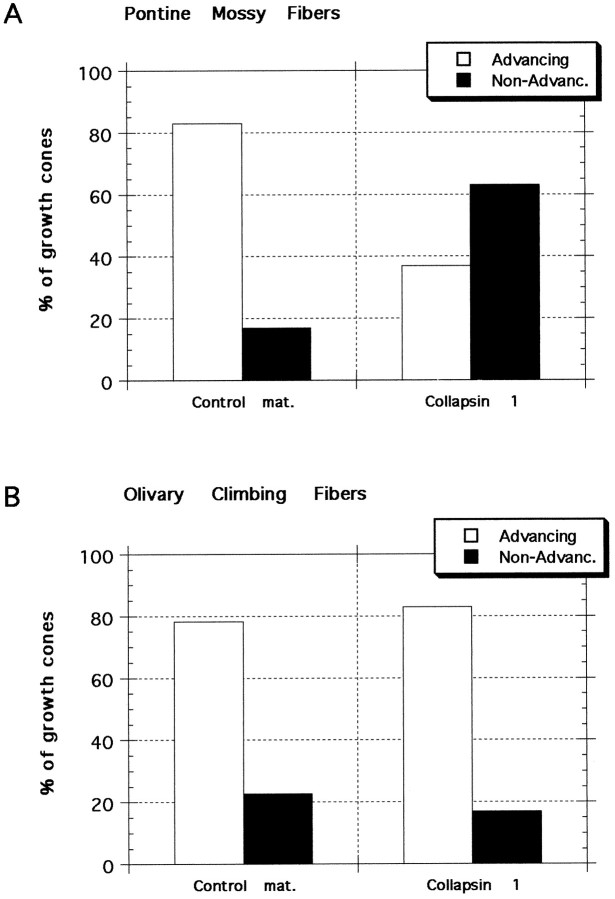Fig. 3.
Response of pontine and olivary growth cones to collapsin-1 and control material. Neurites were scored as either advancing or nonadvancing on the basis of their rate of extension between 15 and 30 min after treatment. A, Pontine mossy fibers. Most growth cones from basilar pontine neurites continue to advance after the addition of control material, and few growth cones are seen to arrest their extension or to retract. The growth cones that either arrest their extension or retract are referred to asNon-Advanc. When collapsin-1 is applied to pontine growth cones, 63% collapse and then arrest their extension or retract. χ2 analysis indicates that the frequency of responses of pontine neurites to collapsin-1 is significantly different (p < 0.003) from their response to control material and significantly different from the responses of olivary neurites to either collapsin-1 or control material. B, Olivary climbing fibers. The responses of neurites extending in collapsin-1 or control material were similar; ∼80% of neurites continued to advance.

